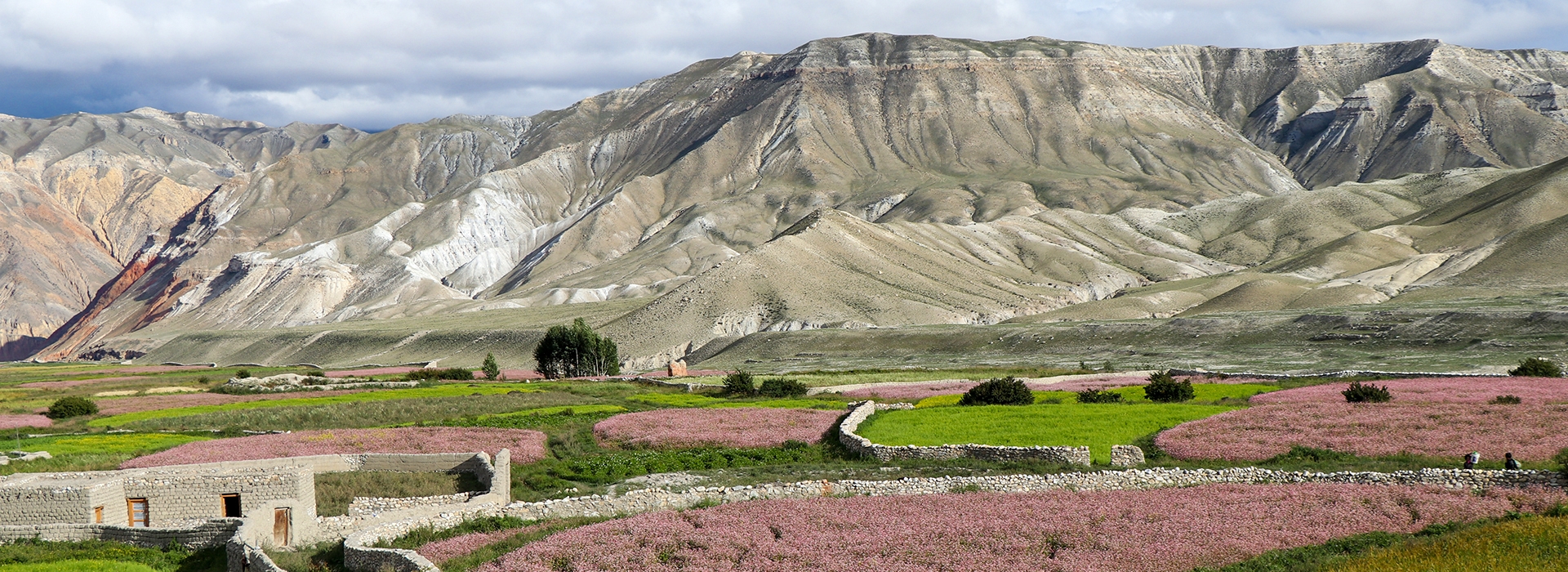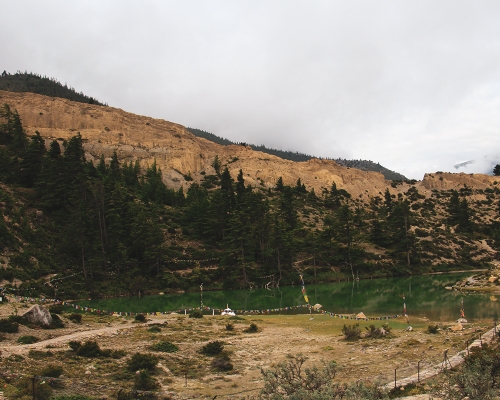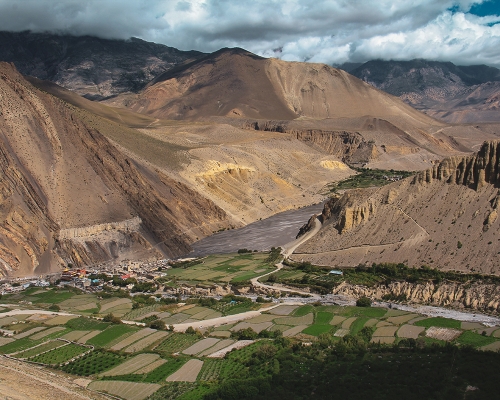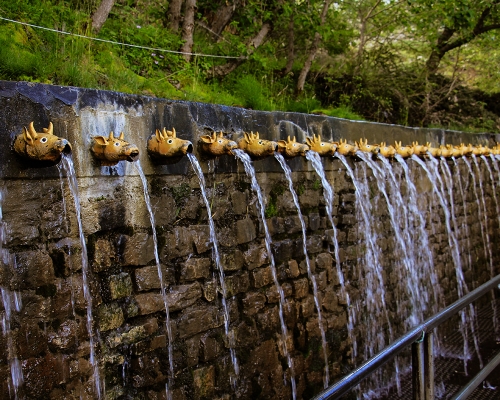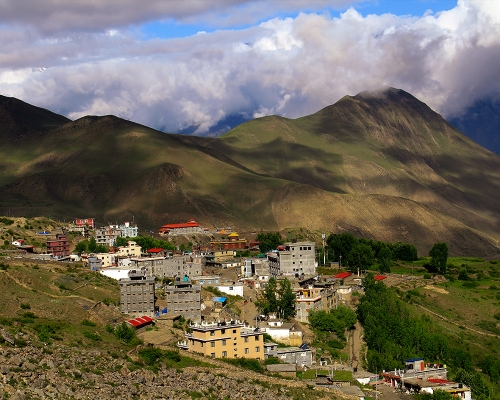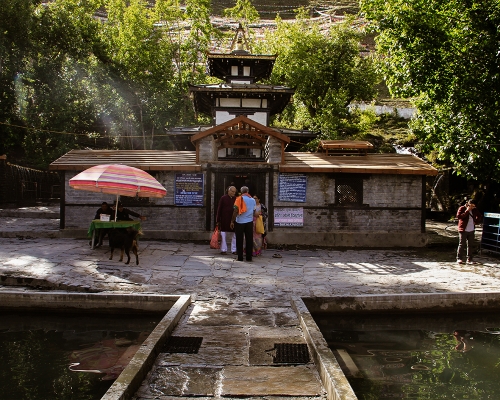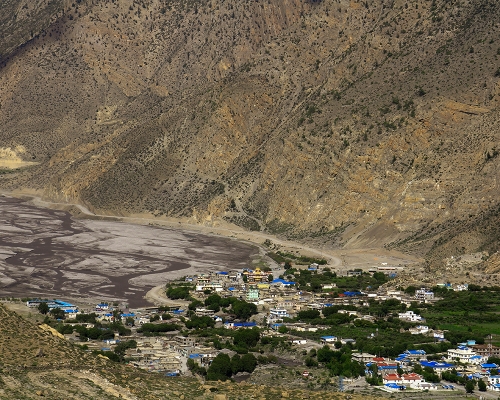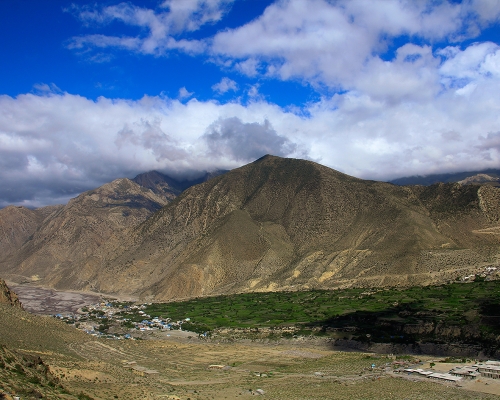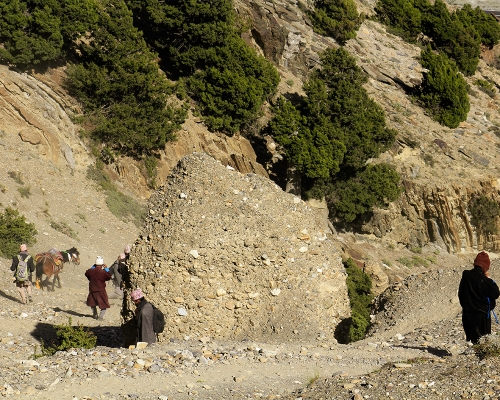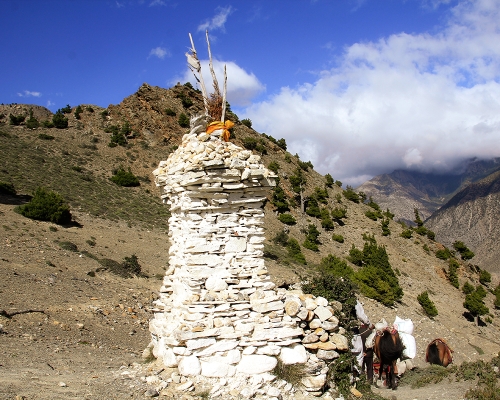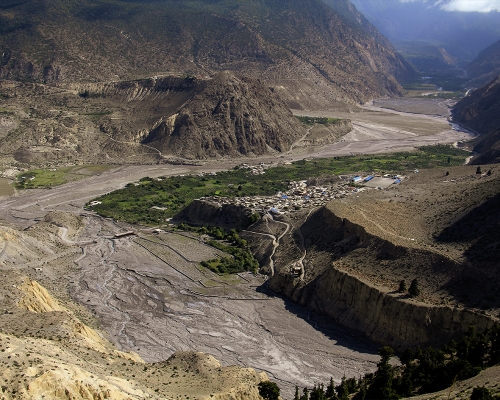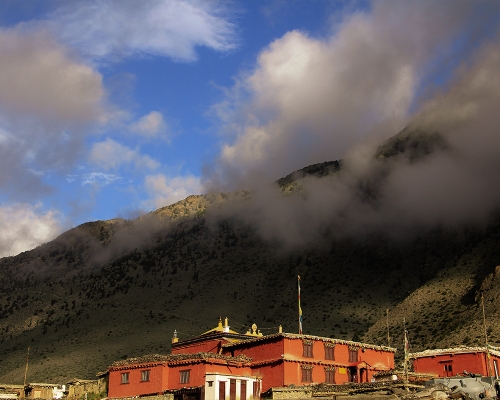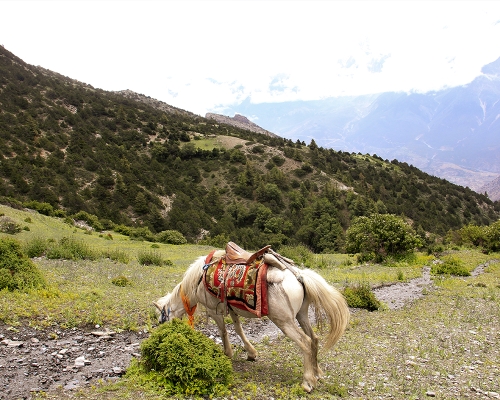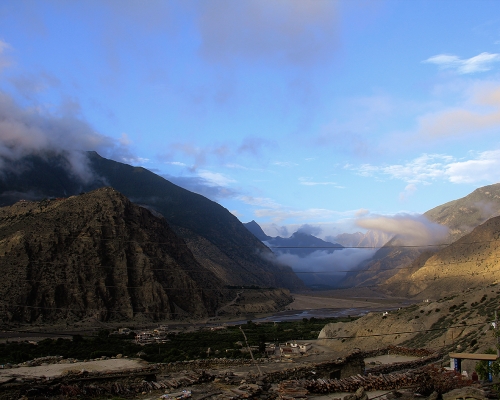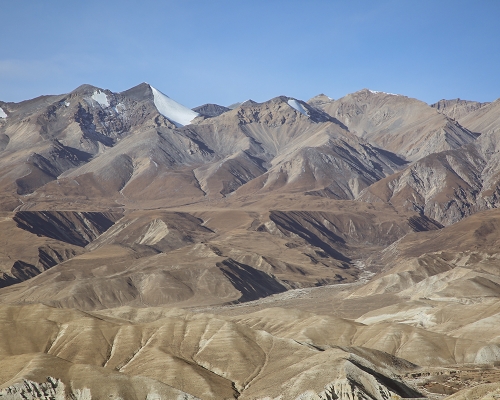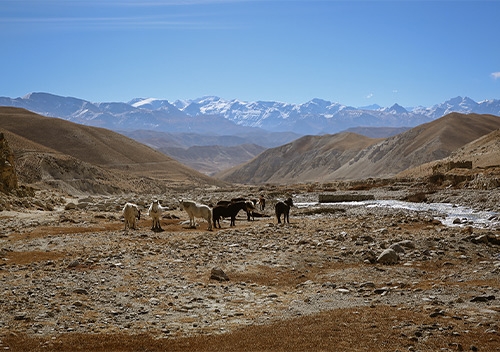Highlights of Upper Mustang Trek
- UNESCO World Heritage Site Excursions in Kathmandu include Pashupatinath, Boudhanath, Swyambhunath, and Patan Durbar Square
- Trek through remote, mountainous regions of Nepal
- Explore ancient Tibetan culture and villages
- Observe traditional agricultural practices and rural life
- Experience a sense of isolation and serenity in the high-altitude deserts
- Explore the ancient monasteries and gompas of the Mustang Region
- Majestic views of Mt.Dhaulagiri, Annapurna, and other Himalayan peaks
- Encounter with the people of Lopa, Gurung, and Tibetan ethnicity
- Experience the lavish and modern luxury hospitality in Pokhara
The Upper Mustang Trek is a popular trekking route in the Himalayas of Nepal, located in the Mustang Region of Nepal. This trek takes you through the remote and rugged region of Upper Mustang, also known as the "Forbidden Kingdom," which was closed to outsiders until 1992. It used to be the restricted treks in Nepal. One of the highlights of the trek is Lo Manthang, the capital of the former Kingdom of Mustang. This walled city is home to many centuries-old monasteries, traditional houses, and chortens, and is a great place to learn about the history and culture of the region. It is also considered one of the most popular trekking in Nepal.
The Upper Mustang trek begins in Jomsom, a small town in the Annapurna region, and takes you through a diverse landscape of rugged mountains, deep canyons, and high-altitude deserts. Along the way, you'll see ancient villages, traditional culture, and beautiful monasteries. The trek is also known for its spectacular views of the Annapurna and Dhaulagiri mountain ranges, and very special trek in Nepal. The trek is considered a moderate to strenuous trek, with several steep ascents and descents. It typically takes around 10-14 days to complete, depending on your itinerary. The best time to go is from May to October when the weather is clear and dry. During the trek, you'll need to be self-sufficient, as accommodation and food will be basic. You'll be camping most nights, and you should be prepared for high altitude, as the highest point on the trek is over 4,000 meters. It is important to note that a special permit is required to trek in the Upper Mustang, and it is only allowed with a registered trekking agency. The Autumn season is ideal for trekking as the monsoon season is over, the sky is clear, and the weather is perfect for trekking. This season also offers clear views of the Himalayas and the surrounding landscape, making it an ideal time for photography, which makes it one of the Special trekking in Nepal.
The Upper Mustang Trek is an adventure that offers a chance to experience the unique culture and landscapes of the Himalayas and the Forbidden Kingdom. It is a special trek in Nepal for those looking for something off the beaten path, and who are comfortable with a bit of adventure, as the Upper Mustang trek itinerary is so suitable for adventure seekers.
Major Highlights of Upper Mustang Trek
Jomsom Bazaar
Jomsom serves as the starting point for the trek at an altitude of around 2700m. It is a small town located in the Mustang district of Nepal and is the administrative center of the region. The town is also an important center for trade and tourism, with many shops and restaurants catering to trekkers and tourists. The trekking in Mustang offers basic facilities such as accommodation, food, and transportation. Jomsom is known for its apple orchards and is an important center for trade and tourism. The town is also famous for its panoramic views of the Nilgiri, Dhaulagiri, and Annapurna mountain ranges.
Lo- Manthang
Lo-Manthang is the capital of the former Kingdom of Mustang and is a major highlight of the Upper Mustang trek, at an altitude of around 3840m. It is a walled city located in the remote highlands of Nepal and is home to around 4,000 people, making it the most popular trekking routes of Nepal. The city is known for its ancient monasteries and gompas, which hold great spiritual significance for the local people. One of the main attractions is the four-storeyed palace of the Raja (king) of Mustang, which still stands in the city. The Forbidden Kingdom is also home to many ancient temples, chortens, and many other cultural sites, which makes it one of the best-selling in Nepal.
Muktinath Temple
Muktinath Temple is located in the Mustang district of Nepal, at an altitude of around 3710m. The temple is considered one of the most sacred places of pilgrimage for both Hindus and Buddhists in Nepal. The temple is dedicated to the god Vishnu and is believed to be more than 2000 years old. The temple is known for its 108 water spouts, where devotees take a bath to purify themselves. The temple also houses a statue of Vishnu and a natural gas flame that is considered to be holy by the local people. The temple is also surrounded by the beautiful Annapurna and Dhaulagiri mountain ranges, which provide a spectacular view for the trekkers. The temple is an important pilgrimage site for many Hindus and Buddhists and is visited by thousands of devotees every year. It is also considered a religious trek in Nepal.
Popular Trekking Routes in Mustang
- Lo Manthang Trek is a classic itinerary that covers the centre of Upper Mustang, including visits to Lo Manthang, Chhosar, and Ghar Gompa.
- Upper Mustang Circuit Trek is basically for experienced trekkers with extended routes to the remote villages and passes of Mustang.
- Mustang Valley Trek is an ideal and shorter trek in Mustang for those with limited time, providing a taste of the region's beauty and culture of the Land of Lo.
- The Seke Trek is a lesser-known adventure that offers a unique opportunity to explore the off-the-beaten-path regions of Nepal. This trek takes you through remote villages, lush forests, and stunning landscapes, providing a truly authentic experience.
Best seasons for Upper Mustang Trek
The best seasons for the Upper Mustang Trek are spring (March to May) and autumn (September to November). During these seasons, the weather is mostly clear and dry, making it the perfect time for trekking. The temperature is mild, the sky is clear, and the landscape is dotted with wildflowers, making it a great time to enjoy the natural beauty of the region. The views of the Himalayas are also usually clear during this time, providing an excellent opportunity for photography.
It is important to note that the monsoon season (June to August) is not ideal for trekking in Upper Mustang, as it can be very wet, and the trails can be muddy and slippery. Also, during the winter season (December to February), the temperature can drop significantly, and the trek can be very cold and challenging.
Fitness for Upper Mustang Trek
The Upper Mustang Trek is considered a moderate to strenuous trek and requires a good level of fitness. It involves long days of hiking on rugged and rocky terrain with steep ascents and descents. The highest point is over 4,000 meters, which can be challenging. To prepare for the trek, regular cardio and strength-training exercises such as running, cycling, swimming, or hiking, and working on leg strength and endurance are recommended. Monsoon season and winter are not ideal for the trek, and it's important to acclimatize properly and take precautions to reduce the risk of altitude sickness.
Difficulty Level of Upper Mustang Trek
The highest point of the trek is over 4,000 meters, which can be challenging for you, especially if you are not used to high altitudes. The trail can be rocky, and at times it can be narrow, and the trek requires a good level of fitness and determination. Additionally, the weather in the region can be unpredictable and can change rapidly, making the trail difficult to traverse.
It's important to note that the trek is considered moderate to strenuous and requires a good level of fitness and determination, but the sense of accomplishment that comes from completing it is well worth it. It is recommended that you consult with a doctor and make sure you are prepared physically and mentally before starting the trek. For further information, contact us.
People of Mustang: The Lopa
The indigenous community of Upper Mustang is primarily known as the Lopa people, who share a strong inclination with Tibetans. The traditional lifestyle characterized by agriculture, animal husbandry, and trade has remained relatively untouched over the centuries. The Lopa people are renowned for their hospitality and deep-rooted Buddhist faith. Apart from the Lopas, the Thakalis and the Gurungs are the inhabitants of the traditional Mustang. Settled in the southern part of Mustang, Lopas earn their livelihood through traditional weaving, woodcarving, and metalwork. They manufacture carpets, rugs, blankets, and traditional thanka paintings of Buddhist illustration.
According to their culture, Lo Pa women usually practice fraternal polyandry where they are tied in marriage with several men of the same family. This tradition was widely popular and was followed to control the number of births due to the lack of food in the Himalayas. The other reason for this custom was to minimize women's chances of becoming widows.

